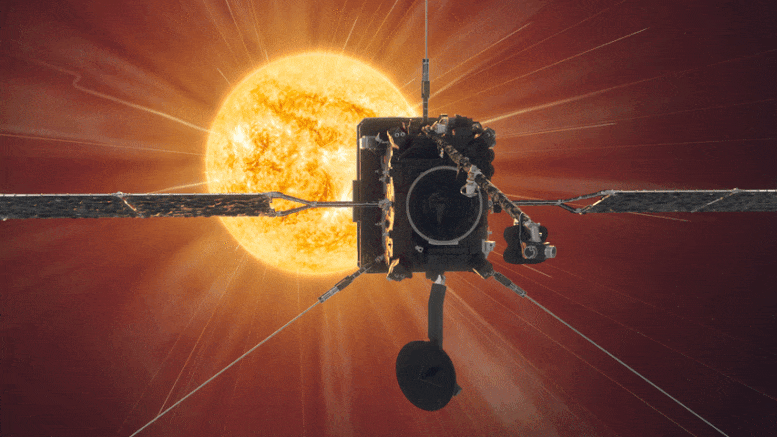The European Space Agency’s (ESA) Solar Orbiter spacecraft makes a long series of flights past the inner planets of the Solar System to get closer and closer to the Sun with each flyby. Eventually, it will approach a distance of 26 million kilometers to observe the Sun up close, and enter the orbit of Mercury. This will be the closest distance that the camera has ever come to the Sun to take detailed pictures of our star.
However, in the intervals between close approaches to the Sun, the Solar Orbiter team does not mess around. Recently, members of the development team of the Solar Orbiter’s Extreme-Ultraviolet Imager (EUI) have found a new way to use the instrument to make it more sensitive to weak extreme ultraviolet light.
The hacking happened by accident, because during the construction phase of the camera, engineers made changes to its protective door. There are a number of closing doors above the device that protect it during launch and during travel through the Solar System. A small extra weight has been added to the security door, which is called a “thumb”. The team realized that when the door is half open, this “thumb” will hang in front of the brightest part of the solar disk, which will allow them to detect weak light coming from the solar atmosphere.

“It was really a hack. I had the idea to just do it and see if it would work. It is actually a very simple modification to the instrumentIn fact, this is a very simple modification of the instrument,” said EUI team member Frédéric Auchère from the Institute of Spatial Astrophysics at the University of Paris–South.
Improvised Solar Orbiter Coronagraph
The team tested their concept and discovered that the thumb is used as an ocular. It turns the camera into something like an improvised coronagraph — a special instrument that is designed to block the brightest light from the star to better see its surroundings. In the past, coronagraphs and cameras were separate instruments.
In the video published by scientists, an image of the solar disk is superimposed on an empty area from the ocular apparatus. This allows researchers to see details of the solar atmosphere, especially the deep layers, which are usually impossible to observe.
“Physics is changing there, the magnetic structures are changing there, and we never really had a good look at it before. There must be some secrets in there that we can now find,” said David Berghmans, EUI principal investigator at the Royal Observatory of Belgium.
Earlier we reported on how Solar Orbiter found a potential source of solar wind.
According to ESA
Follow us on Twitter to get the most interesting space news in time
https://twitter.com/ust_magazine
